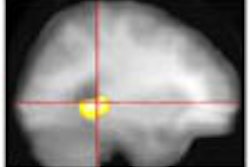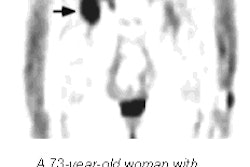New treatments and procedures always seem to work better in clinical trials, when patients and institutions can be carefully selected. Conversely, results in the "real world" tend to lag behind.
That’s not the case when interventionists use radiation to treat and control in-stent restenosis, according to Dr. Philip Urban, director of interventional cardiology at La Tour Hospital in Geneva, Switzerland. Urban reported the results of the RENO (Registry Novoste) Trial -- the world's largest registry trial of radiation in coronary stent implement procedures -- at the August 2001 European Society of Cardiology conference in Stockholm, Sweden.
"These results tell us that the vascular brachytherapy system we use -- the Novoste Beta-Cath System -- is relatively easy to use by trained physicians, and that the results are reproducible in the regular hospital setting," Urban said.
Reporting on behalf of physicians at 46 hospitals across Europe and the Middle East, Urban said the RENO trial included 1,098 patients, 78% of whom were treated for in-stent restenosis. The other patients treated had de novo lesions, or had arteries in which restenosis occurred after angioplasty. Six-month follow-up studies were conducted on 98% of these patients.
"Intravascular brachytherapy is now well-documented as the most effective mode of preventing restenosis following percutaneous interventions, but there have been no data concerning the application of brachytherapy in routine clinical practice," Urban said.
As opposed to being individually selected to join the registry, Urban said the hospitals volunteered to report outcomes. In addition to this self-selection, the procedures were not conducted under the tight protocols of a clinical trial.
Instead, the purpose of RENO was to assess the commercial application of radiation therapy using the Beta-Cath System, Urban said. The trial focused on major acute coronary events (MACE) -- death, heart attack, and the need for revascularization procedures -- at six months. Urban reported that the MACE rate in the registry study was 18.7% overall. For the patients who were being treated for in-stent restenosis, the MACE rate was 17.7%, he said.
"That compares favorably to MACE rates of 18% to 28% published in prior randomized, placebo-controlled clinical trials for those patients receiving either beta or gamma radiation to treat in-stent restenosis," Urban said. "It is also very interesting that the results from this registry trial improve upon the established clinical efficacy of beta radiation demonstrated in other, more restrictive, clinical trial conditions."
In addition, in a subgroup analysis of patients treated with long stents of 60 mm, the target vessel rate was 8.2%, lower than other published trials. About one-fourth of the patients in RENO were diabetics who responded well to the treatment, Urban said.
This vascular brachytherapy system is already approved in the U.S. for treating in-stent restenosis and has been integrated into treatment protocols with great success, according to Dr. Daniel Simon, associate director of interventional cardiology at Brigham and Women's Hospital, Harvard Medical School in Boston.
"We have enough experience with brachytherapy to know that it does work quite well in treating in-stent restenosis for most people I see in my practice," he said.
By Edward SusmanAuntMinnie.com contributing writer
September 10, 2001
Related Reading
Drug-eluting coronary stent reduces restenosis, July 26, 2001
Rate of edge restenosis unacceptably high after use of radioactive stents, May 9, 2001
Gamma radiation reduces in-stent restenosis rate in saphenous vein grafts, March 20, 2001
Primary intracoronary brachytherapy may avert restenosis, January 25, 2001
Brachytherapy is less effective in longer in-stent restenosis lesions, January 23, 2001
Copyright © 2001 AuntMinnie.com



















